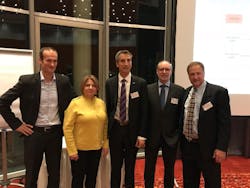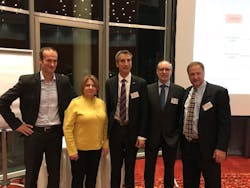The automation industry organizations, in cooperation with leading control and instrumentation suppliers, are seeking to leverage the work of the IEEE 802.3cg Task Force, including amendments to the IEEE 802.3 Ethernet standard for an Ethernet physical layer operating at 10 Mb/s over single-pair cable with power delivery, as well as additional developments to define the requirements and develop the necessary technology to achieve an Industrial Ethernet suitable for use in hazardous locations up to Zone 0, Division 1.
The automation industry organizations and suppliers have formed a steering committee to coordinate the overall work effort to achieve and promote an advanced physical layer for EtherNet/IP, HART-IP and PROFINET.
“APL will be a significant advancement for our industry by extending existing Ethernet technology to address our traditional two-wire topology and intrinsic safety,” stated Ted Masters, president of FieldComm Group. “Like today, multiple protocols will be used in all facilities, but with the added capabilities of APL- and Ethernet-based technologies. With integration through FDI and its information model, our industry can now shift its focus from the protocol to capture value of the information provided by field devices.”
Based on timelines published by the IEEE 802.3cg Task Force, the industry organizations expect that enhancements to the IEEE 802.3 standard for long-reach, single pair Ethernet will be complete in 2019 and available for integration into their respective Ethernet specifications in 2020. Combined with the additional activities of process automation and instrumentation suppliers to accelerate development of technology for an advanced physical layer, the organizations foresee that the first Ethernet-connected field devices for use in hazardous locations will appear in 2021 or 2022.
For more information, please read the Press Release on the FieldComm Group website.
About the Author
FieldComm Group
FieldComm Group

Leaders relevant to this article:


